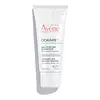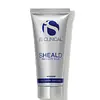What's inside
What's inside
 Key Ingredients
Key Ingredients

 Benefits
Benefits

 Concerns
Concerns

 Ingredients Side-by-side
Ingredients Side-by-side

Water
Skin ConditioningCaprylic/Capric Triglyceride
MaskingGlycerin
HumectantPentaerythrityl Tetracaprylate/Tetracaprate
EmollientTriethylhexanoin
MaskingSqualane
EmollientCetearyl Alcohol
EmollientBehenyl Alcohol
EmollientNiacinamide
SmoothingC20-22 Alkyl Phosphate
EmulsifyingC20-22 Alcohols
Emulsion StabilisingButyrospermum Parkii Butter
Skin ConditioningAquaphilus Dolomiae Ferment Filtrate
Skin ConditioningArginine
MaskingCaprylyl Glycol
EmollientCetearyl Glucoside
EmulsifyingCopper Sulfate
Skin ConditioningSodium Benzoate
MaskingSodium Hyaluronate
HumectantSodium Hydroxide
BufferingTocopheryl Acetate
AntioxidantTromethamine
BufferingXanthan Gum
EmulsifyingZinc Sulfate
AntimicrobialWater, Caprylic/Capric Triglyceride, Glycerin, Pentaerythrityl Tetracaprylate/Tetracaprate, Triethylhexanoin, Squalane, Cetearyl Alcohol, Behenyl Alcohol, Niacinamide, C20-22 Alkyl Phosphate, C20-22 Alcohols, Butyrospermum Parkii Butter, Aquaphilus Dolomiae Ferment Filtrate, Arginine, Caprylyl Glycol, Cetearyl Glucoside, Copper Sulfate, Sodium Benzoate, Sodium Hyaluronate, Sodium Hydroxide, Tocopheryl Acetate, Tromethamine, Xanthan Gum, Zinc Sulfate
Water
Skin ConditioningSodium Hyaluronate
HumectantGlycerin
HumectantC12-15 Pareth-3 Benzoate
AntimicrobialPetrolatum
EmollientTocopherol
AntioxidantBeta-Glucan
Skin ConditioningCetearyl Alcohol
EmollientCeteareth-20
CleansingGlyceryl Stearate
EmollientPEG-100 Stearate
Piper Methysticum Leaf/Root/Stem Extract
Skin ConditioningAhnfeltia Concinna Extract
Skin ConditioningSorbitan Stearate
EmulsifyingPEG-8
HumectantPEG-8/Smdi Copolymer
Zea Mays Kernel Extract
Panthenol
Skin ConditioningCeramide NP
Skin ConditioningSodium Lauroyl Lactylate
EmulsifyingButylene Glycol
HumectantPolysorbate 20
EmulsifyingXanthan Gum
EmulsifyingCarbomer
Emulsion StabilisingRetinyl Palmitate
Skin ConditioningTriethanolamine
BufferingCeramide AP
Skin ConditioningCeramide EOP
Skin ConditioningCaprylyl Glycol
EmollientCholesterol
EmollientPhytosphingosine
Skin ConditioningAvena Sativa Kernel Extract
Abrasive1,2-Hexanediol
Skin ConditioningDisodium EDTA
Water, Sodium Hyaluronate, Glycerin, C12-15 Pareth-3 Benzoate, Petrolatum, Tocopherol, Beta-Glucan, Cetearyl Alcohol, Ceteareth-20, Glyceryl Stearate, PEG-100 Stearate, Piper Methysticum Leaf/Root/Stem Extract, Ahnfeltia Concinna Extract, Sorbitan Stearate, PEG-8, PEG-8/Smdi Copolymer, Zea Mays Kernel Extract, Panthenol, Ceramide NP, Sodium Lauroyl Lactylate, Butylene Glycol, Polysorbate 20, Xanthan Gum, Carbomer, Retinyl Palmitate, Triethanolamine, Ceramide AP, Ceramide EOP, Caprylyl Glycol, Cholesterol, Phytosphingosine, Avena Sativa Kernel Extract, 1,2-Hexanediol, Disodium EDTA
 Reviews
Reviews

Ingredients Explained
These ingredients are found in both products.
Ingredients higher up in an ingredient list are typically present in a larger amount.
Caprylyl Glycol is a humectant and emollient, meaning it attracts and preserves moisture.
It is a common ingredient in many products, especially those designed to hydrate skin. The primary benefits are retaining moisture, skin softening, and promoting a healthy skin barrier.
Though Caprylyl Glycol is an alcohol derived from fatty acids, it is not the kind that can dry out skin.
This ingredient is also used as a preservative to extend the life of products. It has slight antimicrobial properties.
Learn more about Caprylyl GlycolCetearyl alcohol is a mixture of two fatty alcohols: cetyl alcohol and stearyl alcohol. It is mainly used as an emulsifier. Emulsifiers help prevent the separation of oils and products. Due to its composition, it can also be used to thicken a product or help create foam.
Cetearyl alcohol is an emollient. Emollients help soothe and hydrate the skin by trapping moisture.
Studies show Cetearyl alcohol is non-toxic and non-irritating. The FDA allows products labeled "alcohol-free" to have fatty alcohols.
This ingredient is usually derived from plant oils such as palm, vegetable, or coconut oils. There is debate on whether this ingredient will cause acne.
Due to the fatty acid base, this ingredient may not be Malassezia folliculitis safe.
Learn more about Cetearyl AlcoholGlycerin is already naturally found in your skin. It helps moisturize and protect your skin.
A study from 2016 found glycerin to be more effective as a humectant than AHAs and hyaluronic acid.
As a humectant, it helps the skin stay hydrated by pulling moisture to your skin. The low molecular weight of glycerin allows it to pull moisture into the deeper layers of your skin.
Hydrated skin improves your skin barrier; Your skin barrier helps protect against irritants and bacteria.
Glycerin has also been found to have antimicrobial and antiviral properties. Due to these properties, glycerin is often used in wound and burn treatments.
In cosmetics, glycerin is usually derived from plants such as soybean or palm. However, it can also be sourced from animals, such as tallow or animal fat.
This ingredient is organic, colorless, odorless, and non-toxic.
Glycerin is the name for this ingredient in American English. British English uses Glycerol/Glycerine.
Learn more about GlycerinSodium Hyaluronate is hyaluronic acid's salt form. It is commonly derived from the sodium salt of hyaluronic acid.
Like hyaluronic acid, it is great at holding water and acts as a humectant. This makes it a great skin hydrating ingredient.
Sodium Hyaluronate is naturally occurring in our bodies and is mostly found in eye fluid and joints.
These are some other common types of Hyaluronic Acid:
Learn more about Sodium HyaluronateWater. It's the most common cosmetic ingredient of all. You'll usually see it at the top of ingredient lists, meaning that it makes up the largest part of the product.
So why is it so popular? Water most often acts as a solvent - this means that it helps dissolve other ingredients into the formulation.
You'll also recognize water as that liquid we all need to stay alive. If you see this, drink a glass of water. Stay hydrated!
Learn more about WaterXanthan gum is used as a stabilizer and thickener within cosmetic products. It helps give products a sticky, thick feeling - preventing them from being too runny.
On the technical side of things, xanthan gum is a polysaccharide - a combination consisting of multiple sugar molecules bonded together.
Xanthan gum is a pretty common and great ingredient. It is a natural, non-toxic, non-irritating ingredient that is also commonly used in food products.
Learn more about Xanthan Gum